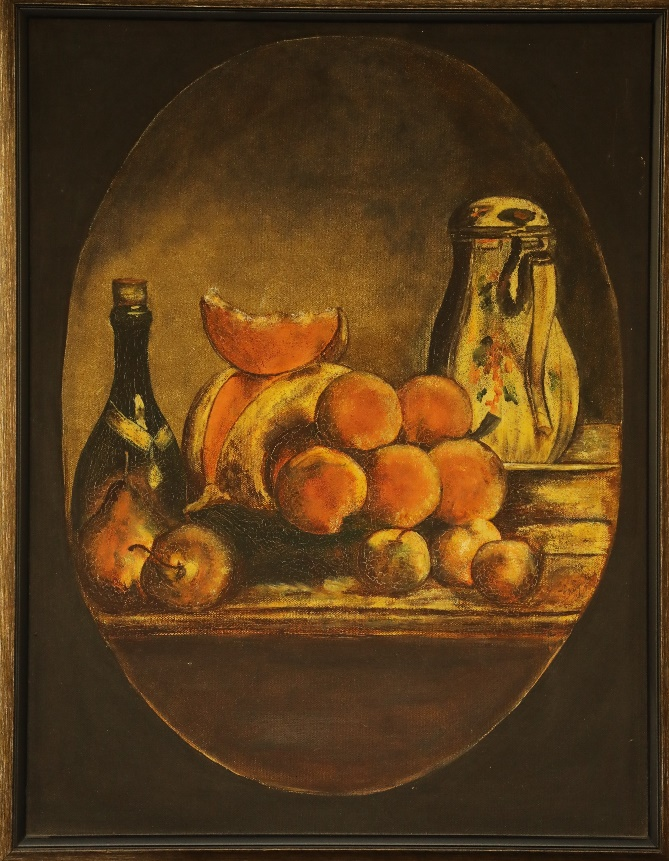Working exclusively from life … it leads us to Observe the Ephemeral effects of light and how they appear to the human eye. Recreating the experience in oil paint.
Dramatic realistic still life oil paintings combine classic techniques with contemporary lighting and subject matter.
I was fascinated by the Old masters who chose Still Life as their topic of Artwork. I like working by practicing the colors and the choice of Still Life they incorporate in their work. One such work which I made was of “THE CUT MELON painted in 1760”, A practice to copy the Artist Chardin’s work. I liked the colors and Composition of the Artwork which prompted me to make a similar one.
Detailed examination of this picture reveals how Chardin balanced the tones and colors in his paintings as carefully as he arranged the elements of line and mass. The acid orange of the melon is set against the soft warm red of the peaches, and both these vibrant tones are seen to advantage beside the dull greens of the bottles and leaves.
I have tried to recreate this painting using my limited at the same time the colors that seemed right from the print of the painting from the internet. My interest in learning from the Master Artists of 16th and 17th century artists. This painting is one of them.
The Artist-
Chardin was a 18th Century Artist …apart from some wonderful Still Life Paintings, he became famous for his Portrait Paintings. Some of his famous Still Life Artworks are – Flowers in a Vase’, ‘The Washerwomen’ in 1733, this painting demonstrates the artist’s sympathy for the activities of the middle-class household and the care he took with his composition.
A Perfect Balance-
Another important aspect of Chardin’s art was his harmonious use of color and tone. After priming his canvas, Chardin applied a thin coat of Oil color (generally a mixture of white lead and a reddish-brown pigment) which gave him a fairly dark background on to which he could place the dark areas, then the half tones, and finally the highlights. When he had arrived at the right tonal balance, he added color, balancing each area of bright color with a correspondingly dark area.
After finishing the picture, Chardin went over it again with the colors he had already used in order to harmonize it.
Items in the painting were linked together by touches of color that related each subject to its neighbors- the red of a flower or a strawberry, for example, would always be echoed somewhere else in the picture. These careful efforts conspired to create a pleasing and apparently naturalistic effect.
Chardin began his career painting still-life of Kitchen utensils, Fish, Meat and Vegetables, such as Kitchen Still-Life with Cooking Pots and Eggs. Critics soon recognized his remarkable talent for composing pictures of balance and serenity, and these unpretentious works enjoyed popularity for well over a decade.
In the late 1730s, however, Chardin turned to figure painting, producing simple genre scenes which included half-length Portraits like The Young Draughtsman and domestic interiors such as The Governess and The Diligent Month. He always kept to what he knew he could do best, capturing the quiet moments of a household rather than attempting to portray violent emotion or movement, and painting everyday objects with as much care as the characters.
As he exhausted the possibilities of genre painting, Chardin returned to Still-Life in the 1750s, showing a new fluidity of touch and exuberance of color in works like ‘The Cut Melon and Grapes and Pomegranates’, ‘The Jar of Apricots, 1758’, ‘The Cut Melon, 1760’, ‘Grapes and Pomegranates 1763’.

TRIP TO KUSH KALYAN TREKKING TRIP
MARCH 2024 – 8th – 14th. The anticipation for this Himalayan trek began to brew in January 2024 when a

